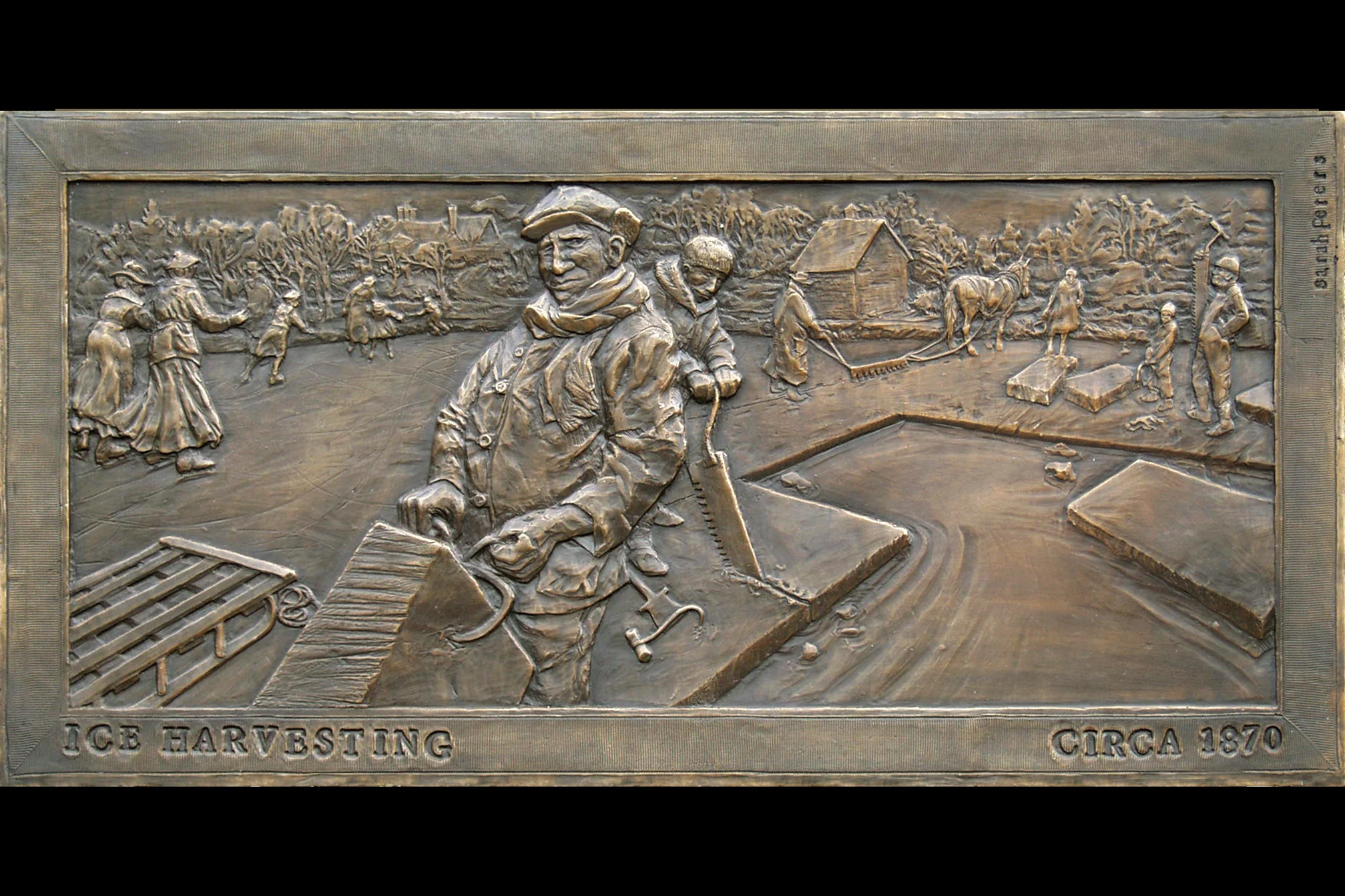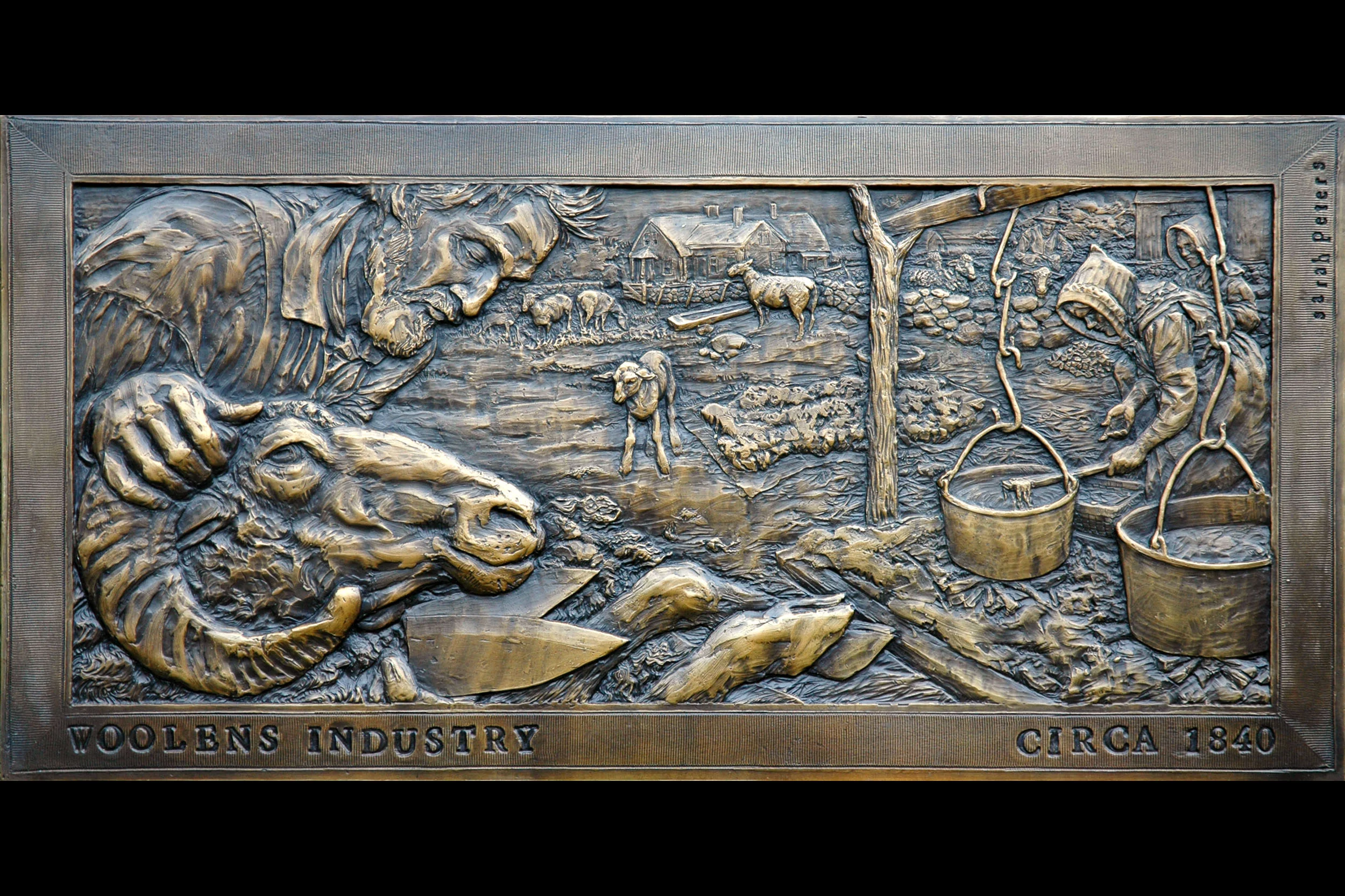
The Botanical Fainting Couch
The Botanical Fainting Couch is a fully interactive bronze bench with a botanical taxonomy theme. Each letter has the texture of a different plant that is identified with the corresponding letter. A = Acer, B = Begonia, C = Comptonia, etc...
It was designed specifically for public garden spaces and is intended to excite and educate viewers of any age about botany and plant identification. Site specific learning tools, maps, and interactive games can be designed around the BFC.
The BFC is a functional bronze bench, measuring roughly 96" l. x 50" d. x 48" h. and weighing just under 500 lbs.
Each plant texture on the BFC contrasts with the next. Touching and engaging with each letter naturally leads to plant recognition.
Juglans (walnut) and Fucus (a seaweed), two surface textures of the BFC, are identified by their Latin genus.
H is for Hosta. Every letter of the alphabet is represented with a unique typographical style.
Zea is the genus for corn. This is one of the easiest textures for children to recognize.
Children gravitate to the BFC, because they see the letters and like to find the whole alphabet. They look for the letter of their name, which leads to interest in the plant textures.
Educational programming and fun games are easily designed around the BFC. Such programming can be custom tailored to your setting, with references to local plants and trees.

The Alphabet Chair
The Alphabet Chair is another texture piece with an Alphabet theme. The textures on each letter start with that letter. For example, A if for Animals, B is for Buttons, and C is for Coral.
The Chair easily supports three small people or two big ones. It is a great library sculpture, as it promotes reading and letter recognition.
The photo to the left was taken at the foundry, before the back legs were welded into place.
The Alphabet Chair, bronze, by Sarah Peters, is a functional interactive sculpture with a textural alphabet puzzle theme.
The letter textures can be tricky to identify, but children are often the first to solve the whole puzzle.
The Alphabet Chair is very at home in libraries, especially among the children's books. Countless story times have gathered around The Chair. It is a common gathering spot for author visits, group photos, and alphabet games. This Alphabet Chair lives at the Lewisville Public Library, in Lewisville, TX.
Ruthie, the elephant, lies down for Sarah as she makes an impression of her skin with Play Doh. The E on the Alphabet Chair is for Elephant Skin!

Fisherman's Memorial
When the city of New Bedford, MA, was looking for a design for a memorial honoring the countless fishermen who have called New Bedford their home, Sarah proposed this design and was selected as a finalist.
The design encompasses the strength, fortitude and perseverance of the men and women of the trade, while providing a tranquil and powerful setting for contemplation.
The fisherman awaits an invitation to be cast full size for a suitable public space.
This is a maquette (a small "sketch" sculpture). The plaster maquette is 18" tall. The proposal is for a 16 foot tall figure, with 10 foot codfish, both cast in bronze.

2007 FIDEM World Congress Medal
This winning design was selected as the official medal of the International Art Medal Federation XXX World Congress. The medal was produced and presented to participants of the Congress and visiting dignitaries.
Numismatist Dick Johnson's article, written for the Numismatic Bibliomania Society, can be read here: http://www.coinbooks.org/club_nbs_esylum_v18n43.html#article31
The XXX FIDEM Congress theme was "Passages to Reconstruction." The medal was created in response to the aftermath of hurricane Katrina and the tsunami in Indonesia.
The individual medals can stand alone, or be linked in many configurations. This activity symbolizes the progress we can make by working together.

Falmouth at Work
Looking Back: Falmouth at Work is a series of eleven bronze plaques made for the town of Falmouth, Massachusetts. The plaques represent many of the historic industries that were significant to the town. They are permanently installed along the sidewalk that abuts the library lawn on Main Street.
Click here for a link to a thorough overview of how this public project was conceived and created.
Each plaque measures 12" h. x 24" w. x 3/8" d.
Photo at right: detail from the Marine Sciences plaque, featuring Spencer Baird, the granddaddy of the Woods Hole science industry.
Inspired by the plaques, a series of highly detailed articles about each of the industries in this series has been written by Falmouth historian Jennifer Gaines. They first appeared in Spritsail (Volume 21, Number 2: Summer 2007), a journal of the history of Falmouth and vicinity, published by the Woods Hole Historical Museum. A link to each article is under the corresponding photo. An introduction about the project and about Sarah's process can be found HERE.
Learn why 19th century New England sailors journeyed to the pacific islands to collect bird guano HERE.































